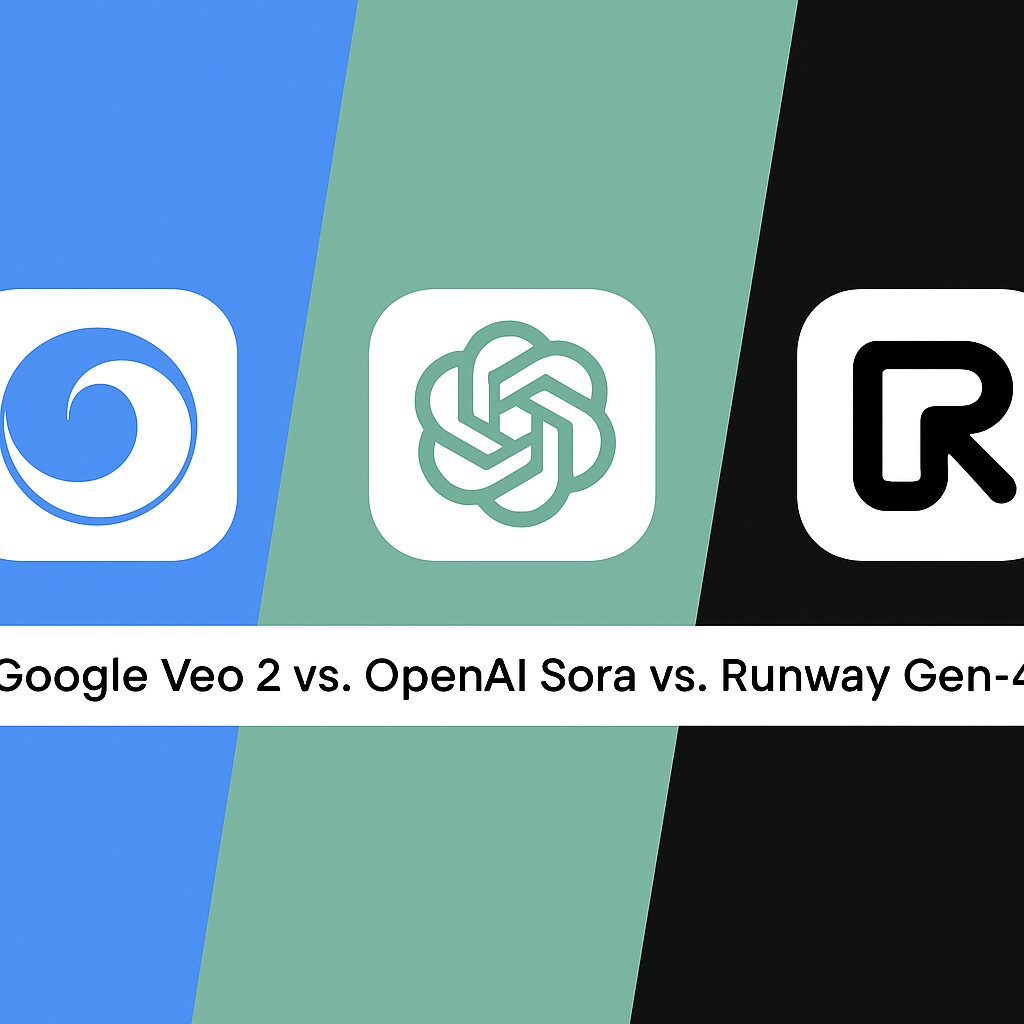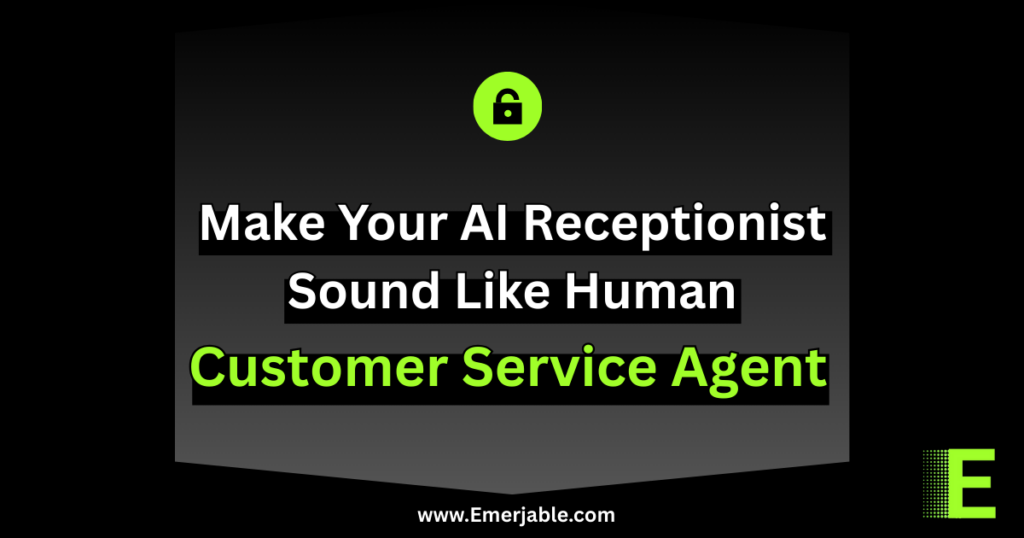Veo AI is a next-generation video generation model developed by Google DeepMind, unveiled in April 2024. It’s part of a growing trend of generative AI systems that can create realistic, high-quality videos from text prompts, similar to how models like DALL·E generate images. Let’s find out comparison about Veo AI vs Sora vs Runway.
🔍 What Makes Veo AI Special?
Here’s what sets Veo AI apart:
🎬 High-Quality Video Generation
- Generates videos in 1080p HD resolution
- Can create clips up to 60 seconds long
- Delivers realistic motion, lighting, and textures
🧠 Advanced Text-to-Video Understanding
- Supports complex, layered prompts (e.g., “a drone flying through a futuristic city at sunset with neon lights”)
- Understands cinematic terminology like zoom, time-lapse, or aerial shots
🧰 Control & Consistency
- Offers more creative control to users than earlier models
- Can maintain visual consistency across frames (something early video models struggled with)
🛠️ Use Cases
- Film pre-visualization
- Marketing & content creation
- Virtual storytelling
- Educational & explainer videos
- Prototype design for creatives
🤝 Competitors / Alternatives
- OpenAI Sora – Similar capabilities, also high-quality text-to-video
- Runway Gen-2 – Popular for fast, stylized video creation
- Pika Labs, Synthesia, etc.
There have been significant updates to Google’s AI video generation model, Veo 2, recently. Here’s a summary of the latest developments:
🎥 Veo 2: New Features and Enhancements
Google has introduced several advanced features to Veo 2, enhancing its capabilities in video creation and editing:
- Inpainting and Outpainting: These tools allow users to remove unwanted elements from videos and seamlessly extend video frames with AI-generated content, respectively.
- Cinematic Presets: Users can now apply guided camera behaviors such as pans, point-of-view shots, and timelapses, providing greater creative control over video outputs. The Verge
- Interpolation Feature: This function generates smooth transitions between images by creating intermediate video frames, enhancing the fluidity of animations.
These enhancements position Veo 2 as a comprehensive video creation and editing platform, expanding its utility beyond simple video generation.
🌐 Wider Availability and Integration
Veo 2 is now becoming more accessible to users:
- Rollout on AI Studio: Some users in the United States have started receiving early access to Veo 2 through Google’s AI Studio, marking a significant step toward broader availability.
- Integration with Gemini API: Veo 2 is now production-ready and available in the Gemini API within Google AI Studio, allowing developers to generate high-quality videos directly within their applications using text and image prompts.
🎬 Real-World Applications
A notable demonstration of Veo 2’s capabilities is its role in enhancing classic films:
- The Wizard of Oz Enhancement: Google collaborated with Magnopus and Sphere Entertainment to create an AI-enhanced version of “The Wizard of Oz” for the Las Vegas Sphere’s massive screen. Veo 2 was instrumental in upscaling the film, extending backgrounds, and digitally including characters who were originally off-screen, offering audiences a groundbreaking cinematic experience.
These developments underscore Google’s commitment to advancing AI-driven video generation and editing, providing users with powerful tools to create and enhance visual content.
Veo AI is one of the most advanced video generation models right now, but whether it’s better than others depends on the use case you’re comparing it for.
You’re Prompting Wrong—Here’s How to Do It Better
Let’s break it down with a quick comparison of Veo AI vs other top models in the AI video space:
🔍 1. Veo AI (by Google DeepMind)
✅ Strengths:
- 4K video generation (rare in this field)
- Understands cinematic language: “aerial shot,” “POV,” etc.
- Stable motion + visual consistency across frames
- Editing tools like inpainting, outpainting, interpolation
- Built-in SynthID watermarking for ethical AI output
⛔ Limitations:
- Still in private preview, not widely available
- Outputs are curated, not open for mass use yet
- May not be ideal for casual or real-time applications (yet)
🆚 2. Sora by OpenAI
✅ Strengths:
- Insanely realistic physics & motion
- High fidelity detail, natural camera movement
- Great with longer and dynamic scenes
⛔ Limitations:
- Still in private testing
- Lacks hands-on editing tools like Veo (inpainting, etc.)
- Early demos show some inconsistencies in object persistence
🆚 3. Runway Gen-2
✅ Strengths:
- Publicly available (used in music videos, TikToks, etc.)
- Can generate short clips from text/image
- Intuitive UI, easy for creators
⛔ Limitations:
- Lower resolution than Veo/Sora
- Less cinematic, more creative/playful
- Motion is less stable, often glitchy transitions
🆚 4. Pika Labs
✅ Strengths:
- Focuses on animation-style and storytelling
- Great for creators and influencers
- Rapidly improving editing & control tools
⛔ Limitations:
- Not suited for high-fidelity, realistic video
- Cartoonish/animated vibe, not cinematic
🧠 AI Video Generator Comparison (2025)
| Feature / Model | Veo AI 2 (Google DeepMind) | Sora (OpenAI) | Runway Gen-2 |
|---|---|---|---|
| 🔍 Release Status | Private Preview (VideoFX & Vertex AI) | Private Research Access | Publicly Available |
| 🎥 Video Resolution | Up to 4K | Up to 1080p | Up to 1080p |
| 🧠 Understanding of Prompts | Deep cinematic language (e.g., “POV”, “timelapse”) | Real-world physics, dynamic prompts | Simple creative prompts, more abstract |
| 🎬 Cinematic Control | Advanced (camera angles, transitions, motion) | Realistic natural motion | Limited camera control |
| 🧱 Visual Consistency | High (character/object persistence) | Improving, but not fully stable | Often inconsistent over multiple frames |
| ✂️ Editing Features | ✅ Inpainting, Outpainting, Interpolation | ❌ Not available (yet) | ❌ Not available |
| 🧰 Tool Integration | Integrated in Vertex AI / YouTube pipeline | No public tool access yet | Easy web editor (text-to-video, image input) |
| 🛡️ Ethical Safeguards | ✅ SynthID watermarking, content filters | ✅ OpenAI moderation (in-house tools) | Basic moderation |
| 🎯 Ideal Use Cases | Filmmaking, ads, storytelling, enterprise video | Realistic simulations, dynamic scenes | Social content, music videos, short creatives |
| 🧪 Technology Base | Latent Diffusion + Transformers | Diffusion + Video Physics Simulation | Diffusion (Gen-1 to Gen-2 upgrades) |
| 🏷️ Accessibility | Invite-only (waitlist open) | Not available publicly | Freemium access, widely used |
🏁 Conclusion:
| Use Case | Best Tool |
|---|---|
| Cinematic storytelling | 🏆 Veo AI 2 |
| Hyper-realistic motion | 🥈 Sora (OpenAI) |
| Casual content creation | 🥉 Runway Gen-2 |
| Editing/Frame Control | ✅ Veo AI 2 |
| Ease of Access & UI | ✅ Runway Gen-2 |
🧠 Bottom Line: Is Veo AI the Best? – Veo AI vs Sora vs Runway
- Yes — for cinematic, consistent, and controllable video generation, Veo 2 is currently the most advanced.
- No — if you want open access, or more playful/real-time creativity, other tools like Runway or Pika may be more practical right now.
- 7 AI Prompting Tips to Write Killer AI Prompts (That Actually Work)
- How to Prompt an AI Receptionist Like a Pro: AI Receptionist Prompting
- Advanced Strategies for Controlling LLM Output with Prompts: Fine-Tuning Your AI
- Mastering Contextual Prompting: Giving Your AI Context & Brain
- How to Refine LLM Prompts for Perfect Output: Prompt Refinement Techniques & The Power of Iteration



